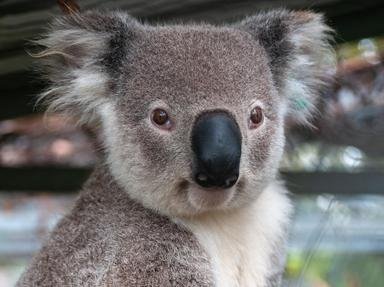Quiz Answer Key and Fun Facts
1. At dusk you might be lucky enough to spot this sturdy marsupial emerge from his burrow for a night of foraging on grass, leaves and roots.
2. Across the darkening sky, a black cloud of these night flyers can be seen travelling up to 50 km from their camps to feed on pollen, nectar and fruit.
3. Attracted by the lights or blown off course by strong winds, these large dark brown insects can invade Sydney in the thousands.
4. Looking just like the tree branch on which it was perched, this silvery-grey bird silently pounces on an unsuspecting moth and returns with it to his tree.
5. A bushy, prehensile tail is a common feature of this fruit-loving, roof-invading folivore.
6. This flat lizard with the leaf-shaped tail, is perfectly motionless on a rocky outcrop as it lies in wait for a passing spider or moth.
7. From the garden pond comes a knocking sound as this voracious amphibian calls to his mate.
8. On the banks of Sydney's harbours and waterways, these large carnivorous native rodents emerge from their burrows at dusk to swim and hunt for food.
9. This nocturnal reptile with the yellowish markings down each side of the head, hunts sleeping skinks in leaf litter by scent.
10. This venomous creature will rush out of its burrow when an unsuspecting lizard or insect walks over the silk trip-lines set up outside it. They will quickly subdue their prey and return to the burrow to eat it.
Source: Author
turtle52
This quiz was reviewed by FunTrivia editor
rossian before going online.
Any errors found in FunTrivia content are routinely corrected through our feedback system.
